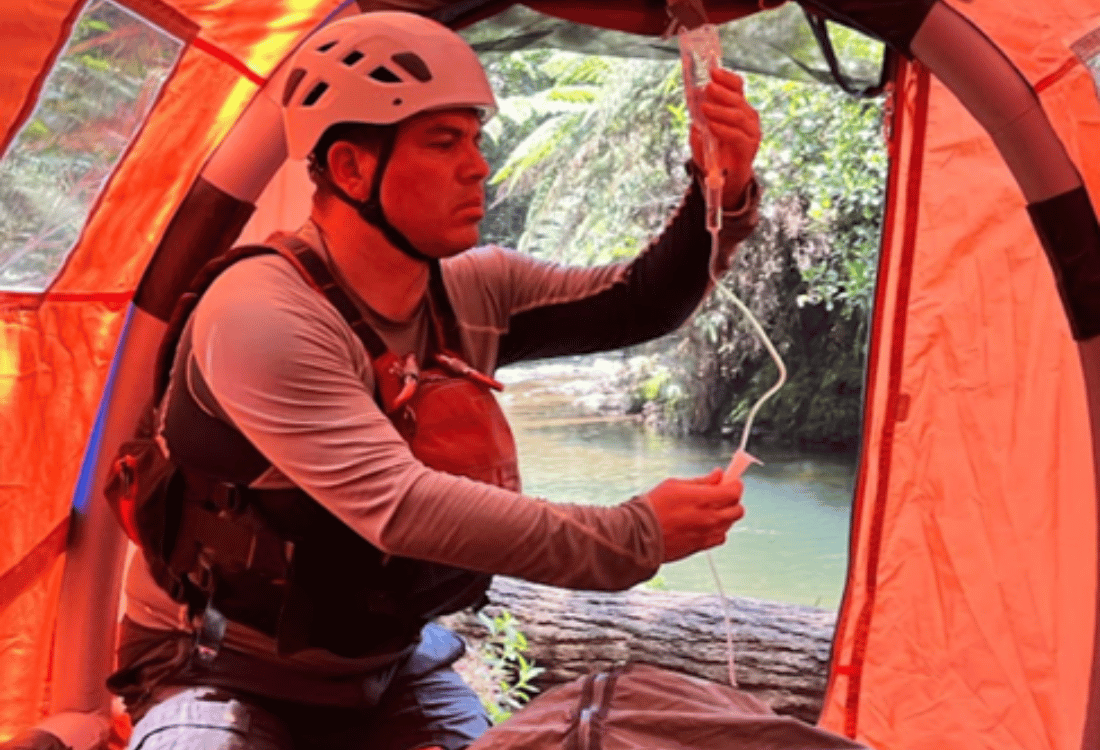
11/04/2025
Is a space blanket any use to a wet casualty? Hypothermia, are you serious?
A trauma victim who has wet clothes following submersion in water, or exposure to rain or snow in an austere environment is at critical risk of hypothermia. Most first aid and emergency response personnel are aware of this fact, which is why the immediate instinct of many is to insulate the casualty with warm materials or a ‘space blanket’ – a reflective foil commonly used in hypothermia management. ‘Keep them warm’ is the logic behind this.
However, if the casualty is still wet, this move can be counter-productive as the space blanket can trap moisture and ultimately worsen heat loss.
So, is a space blanket any use to a wet casualty?
The simple answer is no. Wet clothing significantly increases the rate of heat loss from the body, especially when coupled with blood loss or sweating. As water conducts heat away from the body much faster than air, this can lead to a rapid drop in core body temperature and instigate hypothermia. Unfortunately, the idea that the casualty will naturally dry out as they warm up is flawed when using a space blanket, as the reflective foil wrap prevents moisture from escaping, keeping the casualty wet for longer, and often exacerbating the problem by retaining additional moisture from sweat and breath.
First response
The appropriate first response should be, therefore, not to wrap the casualty in a space blanket (or anything else for that matter), but to remove their wet clothing and dry the skin. This helps decelerate the heat loss caused by the moisture. Make use of towels, blankets, dry clothing, or any available dry materials to speed this process.
Ensure that the patient is dry before attempting to warm them.
Once the patient is dry, a blanket combined with other materials can be useful, as these can help insulate the casualty and help them to retain body heat. The goal of wrapping a dry casualty in blankets, sleeping bags, and other dry garments is to create a barrier against the external environment that prevents further heat loss and protects the patient from environmental moisture. Even in damp conditions, layering the patient with dry, insulating material such as wool, fleece, and synthetic blankets can help to retain heat and avoid further deterioration in their condition.
For the greatest effect, the entire body should be covered, including the head and limbs, as these are the most common areas for heat to escape rapidly. Ensure you introduce controlled external heat sources to assist with rewarming, if available. Always be careful not to apply heat sources directly to the skin, as this can cause burns, but chemical heat packs, warm water bottles, and even body to body contact in insulated conditions can help raise the patient’s core temperature.
Find out more
Get in touch with TSG Associates today to find out about our lightweight, efficient hypothermia management products and how they can improve outcomes when treating casualties in austere environments. You can also download our free Hypothermia Management Guide by clicking here.



.png)







